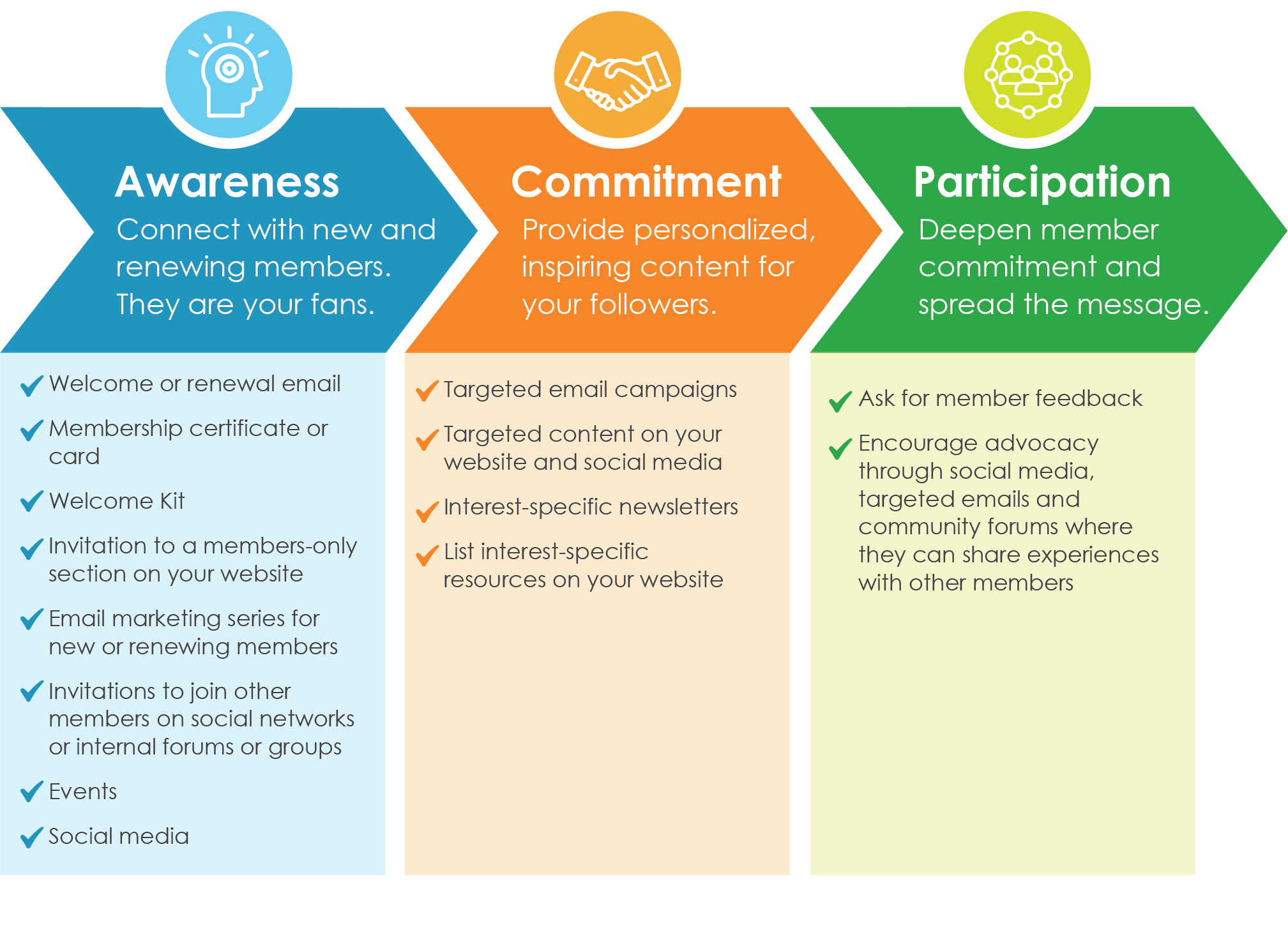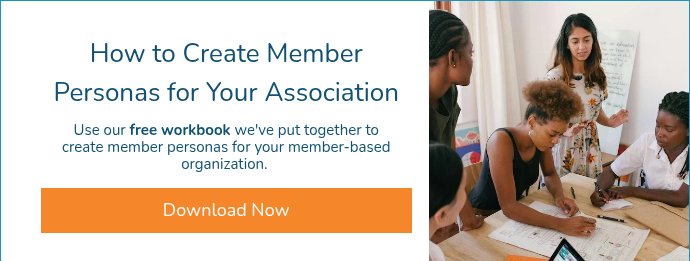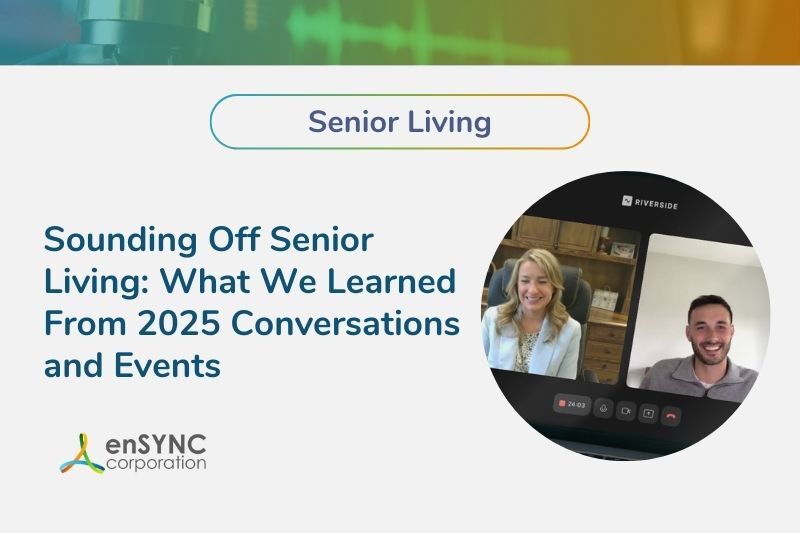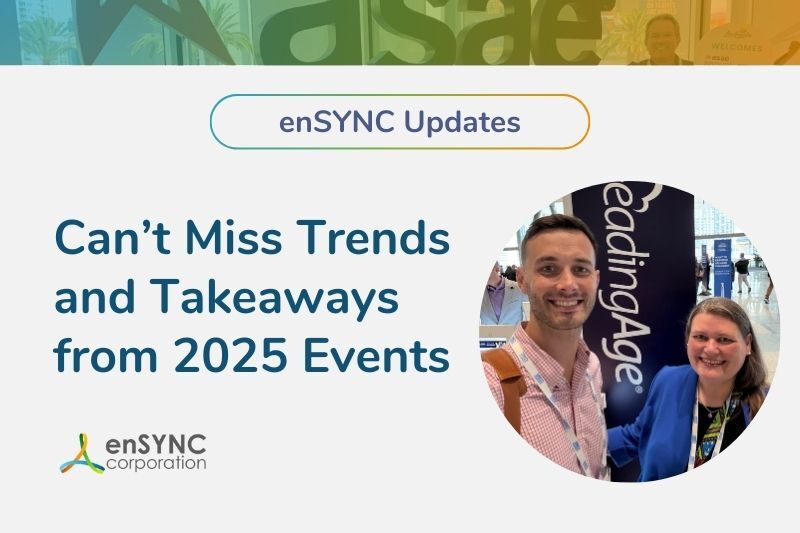Strategy & planning | Nonprofits & associations | Member engagement
Step-by-Step Guide to Association Membership Engagement
April 7, 2020
|
2. Using Your Member Engagement Funnel and Touchpoints
Identifying your touchpoints is the first step to make sure your members are satisfied every step of the way. Your key starting point is to understand what those interactions are and where they take place. Without that, it’s impossible to measure any improvements or to see if changes made to those interactions are having a positive, rather than negative effect.
Member touchpoints are your organization’s points of member contact from start to finish, and are informed by the steps in your member engagement funnel. Use those member personas you had so much fun developing.
- Make a list of your most engaged members
- What do they have in common?
- How long have they been members?
- What things have they been involved in?
- Where are they most active? Social media? Online forums? Events?
- Touchpoints should include these types of interactions:
- Appropriate. Both the context of the interaction and the cultural tone of the interaction meet the needs of member persona
- Meaningful. The interaction was perceived as important or purposeful by the member persona
- Endearing. The interaction creates some form of bond through inspiration, delight or something else that would make that member persona take action.
It’s important to take some time to evaluate your existing membership engagement tactics. Schedule a meeting with your staff and bring in lunch–staff needs engagement incentives, too!
3. Identify Your Value Proposition
Your value proposition is the value you promise to deliver to your members after they join your organization. It’s ultimately what makes your product attractive to your ideal member.
There are three important criteria for developing your value proposition:
- It’s specific: Name the specific benefits your members will receive
- It’s pain-focused: How will you help solve the problems and challengers your members face?
- It’s exclusive: Make your organization desirable to join by highlighting what sets you apart from other organizations in the same space.
Your value proposition should focus on what potential customers get, not your organization. Concentrate on the way your organization fixes a meaningful pain point, improves the lives of your members, and the way it makes them feel.
Whether it’s through quality content, connections with experts, webinar series, or networking opportunities, the value of your organization and online community will give your members a reason to stay engaged.
You may also like...
Best Practices for Managing a Perpetual Membership Program
4. Define Your List of Benefits and Incentives
Your member benefits are a big part of the foundation of your organization, because they're the reason members join, as well as stay with you. This means your benefits need to be relevant and valuable.
When it comes to incentives, no matter what they are, the idea is the same: offer something useful and/or interesting on your website that the member can access immediately after they join, renew or refer.
Benefits
Information, tools, and networking have become easy to find and use online. To be effective, you can't just create any benefit you think will work. You have to follow a process that ensures your benefits are backed up by data and fit a benefit profile that ensures relevancy now and in the future.
- Using the personas you’ve developed, figure out what they value
- Use data from your AMS, analyze member activity
- Use surveys and polls to discover what benefits members currently enjoy
- Use crowdsourcing tools to gather comments and feedback
- Include immediate action items
- Ask yourself which benefits members can get value from on a frequent basis
- Prepare for the future by keeping current things like legislation and technology so you can tailor benefits to help members deal with any changes.
A recent study surveyed nearly 400 current association members and found some revealing trends: the top-ranked member benefit for respondents was email digests/newsletters, followed by member discounts; private online communities and virtual education tied for third.
Moreover, 71% of members said a personalized member experience is important to them, yet only 64% feel their association is delivering that. Also striking: 52% of members said they wish their association asked for their input more. A significant jump from 29% the prior year.
Why does this matter? Because members who don’t feel engaged or don’t perceive value are more likely to consider leaving. Use this data to ensure your benefits strategy is not only relevant but also differentiated and responsive.
Incentives
Finding the right incentive for your potential or current members can be difficult, because what works for one organization doesn’t work for the next. So, when creating your incentive, consider your members needs, wishes, desires, and problems. Ask yourself what you can create that members will be excited to receive.
You want them to look at your incentive offer and feel that they absolutely need or want it. It should be so appealing that potential members sign up right away, current members not only renew, but decide to become perpetual members, and provide plenty of referrals.
The best way to come up with a great incentive idea is to generate a large list of potential options. Again, schedule a meeting, bring in lunch or snacks and get creative!
The best way to come up with a great incentive idea is to generate a large list of potential options.
5. Set SMART Goals and KPIs for Associations
To know if your strategy is working, you need to begin with clearly developed and easily measurable goals.
Most important? Make sure your strategy goals are aligned with the goals of your organization. Engagement, at its core, will benefit all aspects of your association – retention, event registrations, member satisfaction – but it’s up to you to clearly define those connections.
How To Use the SMART Goal Method
Robust engagement strategies start with specific goals, and the SMART method can help. The components of this method are:
- Specific: This means your goal is well defined, clear and unambiguous. Ask these questions:
- Who is involved?
- What do you want to accomplish?
- Where is the goal to be achieved?
- When do you want to meet this goal?
- Why do you want to achieve the goal?
An example? I want to boost member engagement is a general goal. A specific goal is, “I want to achieve a 15% increase in member engagement with the online forums by the end of the year so we can use this as a benefit of joining for members who want networking.”
- Measurable: Set a criteria for measuring progress. The questions to ask:
- How much?
- How do you know if you’ve reached your goal?
- What is your progress indicator?
Building on the specific goal example, you would add something like, “Every week I want to add X new registrations on the online forums.”
- Achievable: Any goal must be achievable. It’s okay to challenge yourself, but you have to set a goal you can actually reach. Pie-in-the-sky is just that.
- Does your organization have the resources and capabilities to reach the goal?
- If the answer to the question above is, “No,” what is missing?
- Have other organizations reached this goal successfully?
Do your research. Look for organizations that either share or have a mission close to yours. How are they doing and what’s worked for them?
- Realistic: While this might seem to be the same thing as “achievable,” it’s not. It means that your goal can be realistically achieved through available resources and time.
- Is the goal realistic and within reach?
- Can you reach the goal given available time and resources?
- Can you commit to achieving the goal?
A SMART goal is probably realistic if you can answer yes to all the questions above.
- Timely: Set a start and finish date. If you don’t have a time constraint, there’s no sense of urgency and few will be motivated.
Using the same example, “I want to achieve a 15% increase in member engagement with the online forums by the end of the year so we can use this as a benefit of joining for members who want networking. Every week I want to add X new registrations on the online forums. This means we start this project on June 1 to reach this goal by December 31”
Set your goals at a high level – retention numbers, new memberships, donor retention, pledge fulfillment, average gift size growth, donor growth and donation growth.
You may also like...
How Well Does Your Tech Support Your Mission?
Take our 5 minute quiz and find out
KPIs for Associations
Your key performance indicators (KPIs) are measures that help you understand if you’re achieving one or more of your strategic goals. KPIs should be watched for the smaller touchpoints such as email open rates, click-through rates, events attended; the “micro-moments.”
Set goals for these smaller touchpoints:
- Direct traffic. This is all the visitor traffic you get from a specific action you took to increase business interactions. This could be by clicking a link or button in an email, ad, or social media post.
- Time on the site. The amount of time spent on your website is a good measure of customer experience. Keep track of the average time spent per member to determine if more or less time spent on your site is a good or back thing. Sometimes, members might spend more time on your site because it’s difficult to navigate rather than because you have valuable content.
- Multi Channel touchpoints. How are members interacting with your organization? Phone, email, chat, text message, social media?
- Measure website interaction efforts. Use customer surveys to find out if members are finding what they are looking for. Have them score your website.
- Keep track of how often your organization is mentioned in social media. Be sure to engage with anyone who mentions your organization, whether positively or negatively. If there are issues, address them quickly.
- Member satisfaction. This includes paying attention to:
- Average resolution time for a member inquiry.
- Self-service rate. Does your website have a way for members to help themselves solve problems?
- Average handle time. Members want speedy service. How long is it taking to resolve issues from the time the member makes a phone call, sends an email or posts a comment on social media?
Happy members in our social-media-driven world can make the world of a difference by encouraging others to join your organization and share their experiences. Setting up your organization to foster positive member experiences on your website, over phone, in person, and through other channels will help you establish a solid foundation with plenty of room for growth.
Create a Communication Plan and Calendar
To foster engagement, you need a communication strategy. This is a customized plan to connect with your organization’s stakeholders through multiple channels. Some of these interactions will be personalized, and others will be with your entire audience.
You probably already have a master mailing list, including names, email addresses and physical addresses, but if you don’t, develop one. Make sure your list is segmented by key groups such as members, volunteers and donors.
Communicate with your entire list about things like:
- Networking
- Conferences
- Organization updates
- Advocacy and involvement
- New benefits
Other communication requires personalization, such as:
- Certifications
- Continuing Education Credits
- Professional Development
- Renewals
- Volunteer opportunities tailored to their interest
- Thank-you emails for non-dues related giving
- Donor thank-yous
- Upcoming events that are customized for a particular audience segment
But how do you make all of this happen?
Consider Automation with an Associations Management System (AMS)
An Association Management System (AMS) like iMIS streamlines repetitive tasks and frees up your staff to do more important work. And automation isn’t just about sending out emails. It can be used to set up tasks for your team to follow a cadence for outbound calls and even when to send a thank-you card.
Think of automation software as membership management software. You can plan events, launch fundraising campaigns, recruit, measure, engage and grow.
With the iMIS Process Automation module, you can:
- Structure your interactions so both members and non-members receive tailored, relevant messages at the right time.
- Use your time to be strategic instead of focusing on manual repetitive task
- Organize routine communications
- Set up automated welcomes and thank-yous
- Personalize experiences
- Increase donations and engagement
- Expand and create content offerings with easy content management
Think of iMIS's automation features as membership management software. You can plan events, launch fundraising campaigns, recruit, measure, engage and grow.
You may also like...
How to Grow Your Membership
(by Using the Most Robust Perpetual Membership Tool for iMIS Available)
Track and Measure Member Engagement
Tracking and measuring member engagement is an important part of strategy development. You need to know what’s working and what’s not, as well as track your ROI for things like marketing, content creation and IT infrastructure investment.
Measuring engagement is all about data, and you get that data with every member interaction, from tracking website visits to phone calls to face-to-face meetings.
Here’s where automation software becomes member engagement software. At this point, it really pays for itself.
The most common engagement metrics you’ll use are:
- Renewal data is an obvious engagement indicator. If people are canceling their memberships, you definitely have an engagement problem, and you can look at what happens when people renew – if a member needed many reminders and renewed at the last minute, they probably are not very engaged.
- Email automation reports provide a great tool for measuring engagement. You can track things like inbox placement, open and click rates and click-throughs to inform your KPI as well as engagement. Are members paying attention to your emails? Do they respond promptly? Do they respond to your CTA?
- Marketing automation data will show you how many leads are converted to membership, which is a sure signal of engagement. Your marketing automation tool can place members and potential members into your engagement funnel, which means you can identify where people fall out of the funnel and find obstacles to engagement.
- Data from the members-only section of your website is a great indication of which resources are important to your members and track individual member activity to see who is visiting regularly and who rarely or never logs in.
- Training completion rates can tell you if people are completing training modules. And do they stick to the essentials or explore other training? You’ll get insight into whether your training provides value.
- Event attendance and feedback can be a great indicator of engagement. Members are unlikely to travel unless they feel what you’re offering has value. Get even more data by using surveys and feedback cards.
- Customer service interactions. Your AMS should register all member interactions, including calls to customer service, which are an indication of member sentiment and engagement.
Set Up Dashboards for Real-Time Information
Reports and analytics from your AMS give an overview based on certain parameters such as sorting by members, donors and volunteers. Dashboards provide information in real-time.
iMIS dashboards provide quick and easy access to information on key metrics, keeping your staff well-informed so you can improve engagement.
Using an engagement dashboard gives you the following information:
- Total engaged contacts versus total contacts
- Recently engaged contacts (within 6 months)
- Newly engaged contacts this month
- Average score
- Engagement by category (funnel chart)
- Engagement by month (area chart)
- Score sum by member type (bar chart)
- Top contacts (individuals, organizations and organizations by individual engagement
- High engagement score contacts not recently engaged (within six months)
- Scores by component (pie chart)
Another useful dashboard to inform your engagement strategy is the membership dashboard, which tells you:
- Number of members
- Number of new members and comparison to last year
- Number of renewed members for the year
- Number of lapsed members
- Number of active members by member type
- Amount of revenue by member type
- Number of members by chapter
- List of new members
- List of lapsed members
- Display of recent history
- Membership alerts including alters for lapsing members and new joiners
You can tailor iMIS dashboards to your particular organization’s needs.
Hold Monthly Meetings to Review Member Engagement
Your member engagement strategy is not set in stone. Nor should it be. You organization and your members are continually evolving and your strategy needs to evolve with it. New technology, such as Artificial Intelligence (AI) bring new opportunities to boost member engagement.
To that end, you should hold monthly meetings with your staff. Bring all the data, but remember that data is just part of the equation.
Your members are human beings, and engagement is about emotion. Have staff talk about their member interactions, how they went and how they can be improved.
By combining data with the human experience, you’re well on your way to honing a successful member engagement strategy.
Work with our team to establish and implement a technology solution to support member engagement and grow your association.










